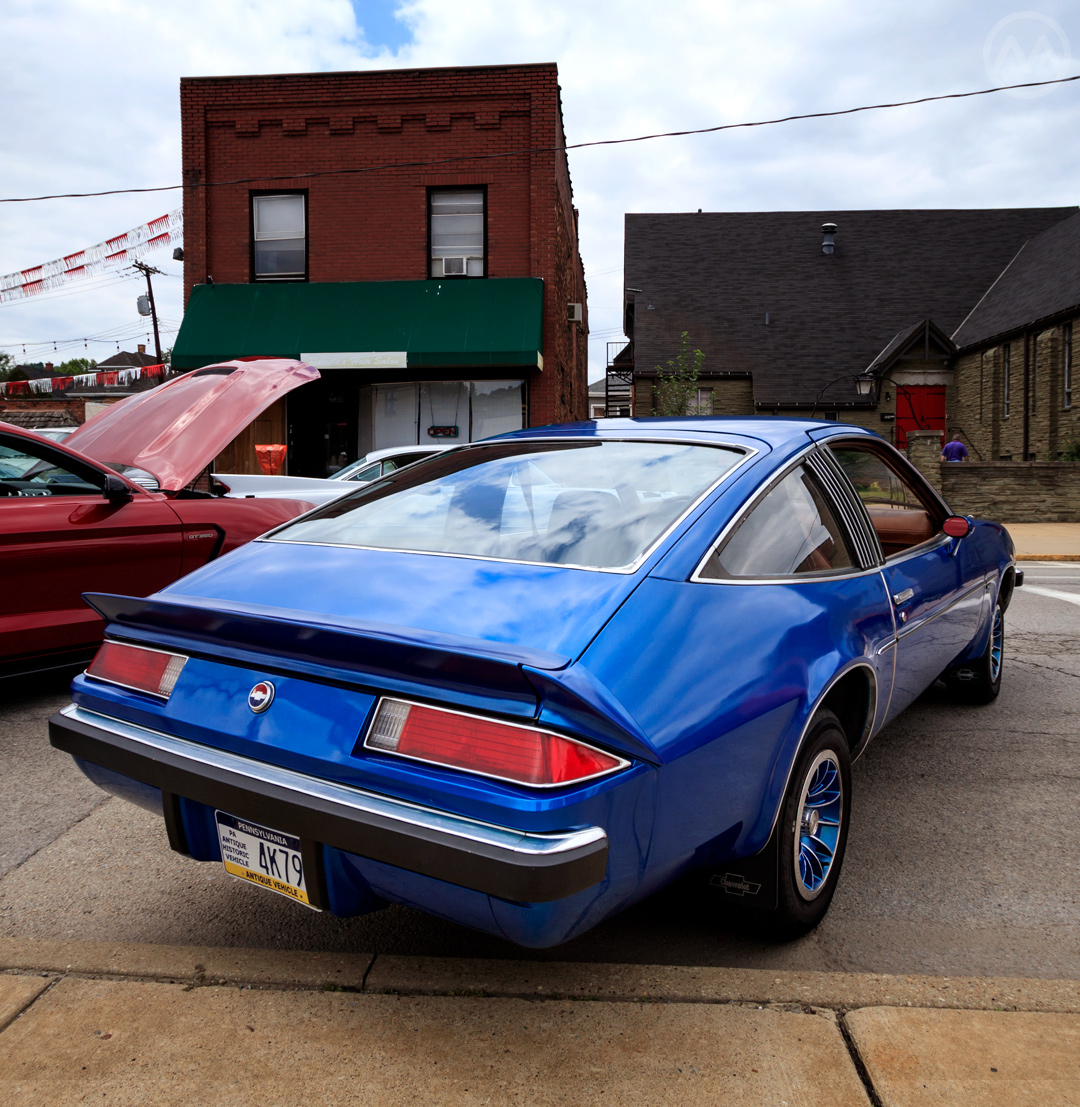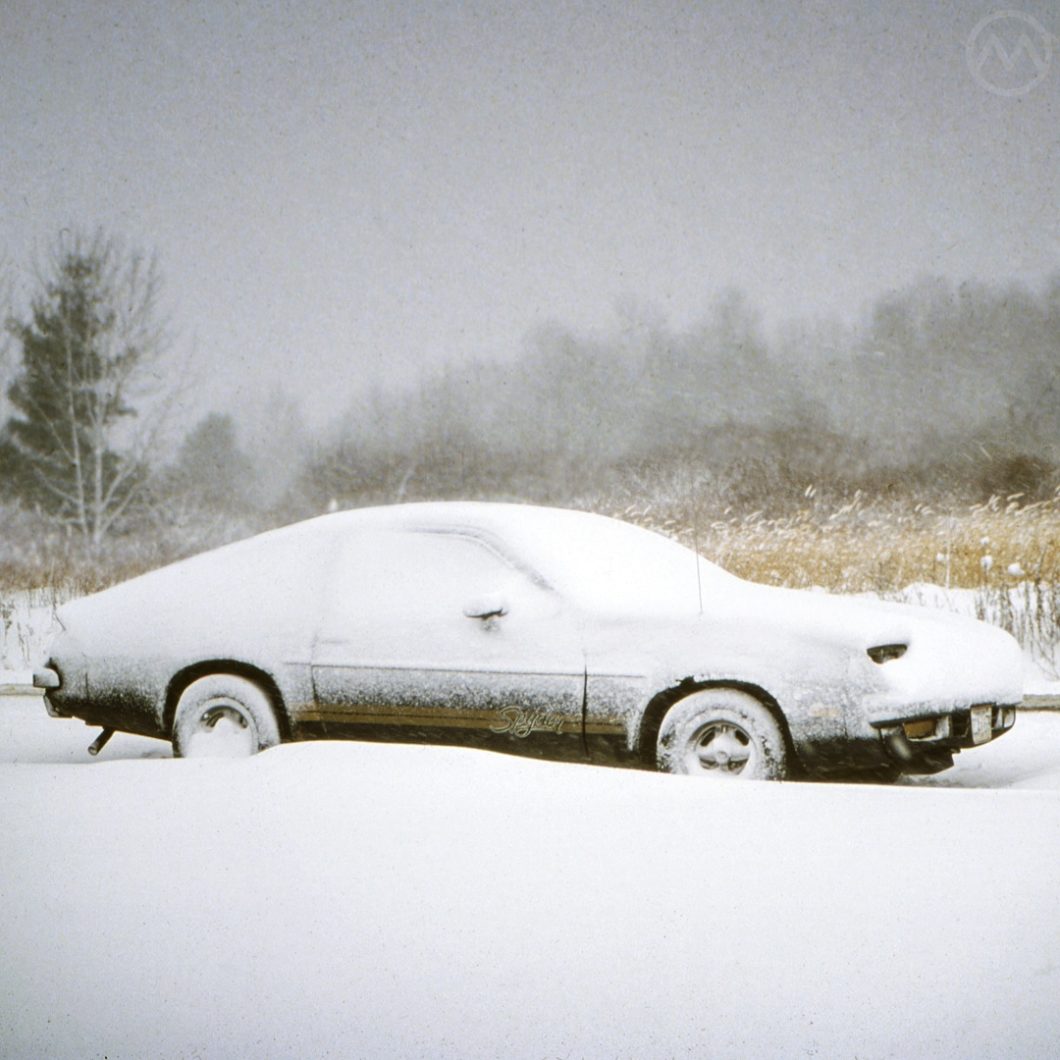If you’re old enough you’ll remember the anxiety of heading back to your aging snowbound car after leaving it somewhere in the elements for a day or two and wondering if it will start. But you can forgive some cars a great deal, and even buried in the snow the Chevrolet Monza is drop dead gorgeous.
The H-body Monza and its four siblings, the Buick Skyhawk, Olds Starfire, and Pontiac Sunbird all used this graceful 2+2 fastback shape, though the Pontiac debuted as a version of the Monza’s frumpier, formal-roofed notchback “Towne coupe.”
Resembling Ferrari’s short-lived 1971-72 365GTC/4, the Monza was GM’s achingly pretty answer to Ford’s Mustang II, but it had a troubled evolution like its parent and predecessor, the Chevrolet Vega.
Like the Vega it was similarly prone to rust and quality ills, but much could be forgiven for its low price, handling, and those looks. More than 700,000 would be sold by 1981, entirely in North America.
For European readers: Opel’s contemporary Monza may have shared a name, rear-wheel drive, and a fastback shape, but that German car was an entirely different animal. Nor did the Monza have any relation to the vaguely similar looking hatchback Opel Manta B/Vauxhall Cavalier.
The Making of the Monza
The Monza was based on the Vega and used much of its structure and running gear, but It was also heavily re-engineered to accept GM’s proposed Rotary engine and to be stiffer and larger. It’s an H-body, yes but the Monza and its siblings were a little bit more than just a reskinned Vega.
GM’s Rotary Combustion Engine (RCE) was long time engineering boss Ed Cole’s last project and one which went entirely off the rails over time. At least $50M in licensing fees to NSU/Audi were spent trying to make it work, but it just never did.
GM’s rather large 3.3L RC2-206 engines reached prototype testing and weren’t terrible, but they still had rotor-tip problems as at NSU, as they were thirsty and dirty like all early 1970s Rotary engines.
What had seemed like a new and future-proof powerplant in 1970 was all wrong by the time OPEC came along, and the RCE was permanently cancelled in 1974 after several expensive delays and the looming prospect of failing to certify it for 1975’s emissions standards.
The Vega, the Monza, and various potential Corvette replacements were to have been powered by these engines, but only the Monza was truly directly impacted by the cancellation, as was AMC’s Pacer, developed around the GM RCE.
The Monza was launched in the fall of 1974 with the Vega’s “Dura-built” four and a new 262-cid version of the small block V8 created in response to OPEC and also used in the Nova. High-altitude Monzas could also get a 350, a hot number in what was a 2,700-lb. car (Monzas gained about 250 lbs. over the Vega).

The styling was done under Ferrari fan Chuck Jordan, and while the profile mirrored the GTC, the overall look was arguably better resolved than Pininfarina’s original (a matter Ferrari folks can debate all they like). GM had practical production considerations to take into account, Ferrari did not.
The Monza looked like a Ferrari was also a car you and your friends could afford, with the hatch having a $3,600 base price tag in 1975.
The formal-ish “Towne coupe” responded to the incredibly popular Mustang II Ghia Coupe. The Towne Coupe, early on, had different front end styling too, but in time both versions of the car were available with both versions of the front end.
The Pontiac version, which debuted with the notchback styling, was planned from the start and got a little more stylistic change upfront and behind. The Buick and Olds variations were last-minute post-OPEC add-ons, approved by GM’s board on the same December day as Cadillac’s first Seville, and externally they resembled the Monza very closely.
Splashy Specials
Chevy’s 305 soon replaced the 262, and Pontiac’s 2.5L “Iron Duke” replaced the Vega four, with two versions of Buick’s V6, the 3.2L LC9 and the 3.8, eventually optional as well.
The V6 and V8 choices were nowhere near as fuel-efficient as the base fours, but they were more durable than the Vega engine and gave more power, and thus were popular choices. The Vega, which did not offer anything larger than the fours, saw sales decline as a result of the Monza’s popularity.
In time, all four Monza variants would get a plethora of special editions which differentiated them quite a bit, most notably the glow-in-the-dark stripes on the “Buick Nighthawk,” but the basic cars were the same.
Of these splashy specials the most popular was Chevy’s own Monza Spyder, which could be an appearance or substantive package depending on the boxes you ticked. Late Spyders could have the 305 V8, a heavy duty suspension and, of course, bold tape stripes and colors befitting a late 1970s sporty coupe.
The Monza and its relatives were built primarily at GM’s Lordstown facility (but also in Quebec), which was the site of a bitter strike in 1972 and the scene of many labor relations gripes, which took a toll on quality. The Monza was very sexy, but quality control was abysmal. The cars were also very rust prone and, looking sporty, tended to be driven hard, which further reduced their numbers.
They were decent handlers and relatively light, which made them easy to hot up just like the Vega had been. The Rotary, which would have been light and punchy, would’ve been a good powerplant but was doomed from the start. Later in life, because a V8 was easy to fit and available from the factory, the Monza became a favorite of drag racers for its light shell.

Shoehorning in the V8 made for difficult maintenance in the stock examples, however, as there just wasn’t room to properly access spark plugs and other basic maintenance tasks. Some cars also had motor mounts that weren’t quite up to the task of lasting for years and years under that hefty V8.
All over American roads in the late 1970s, the Monza was a rarity by the early 90s and they’re very hard to find today. This snowbound Spyder was seen sometime in the late 1980s, we think at the Metro North/Amtrak Croton-Harmon strain station about 40 miles north of New York City.
The Monza was phased out in 1980 to make way for the Chevrolet Cavalier, but had a long final-year run as the Cavalier was an early intro for 1982.

